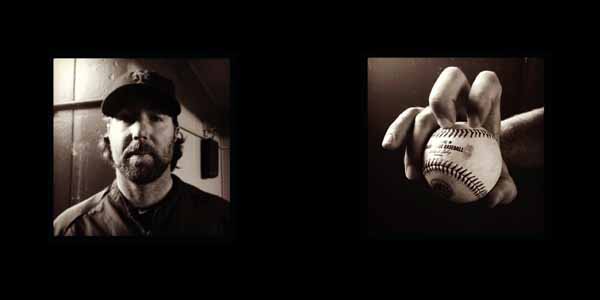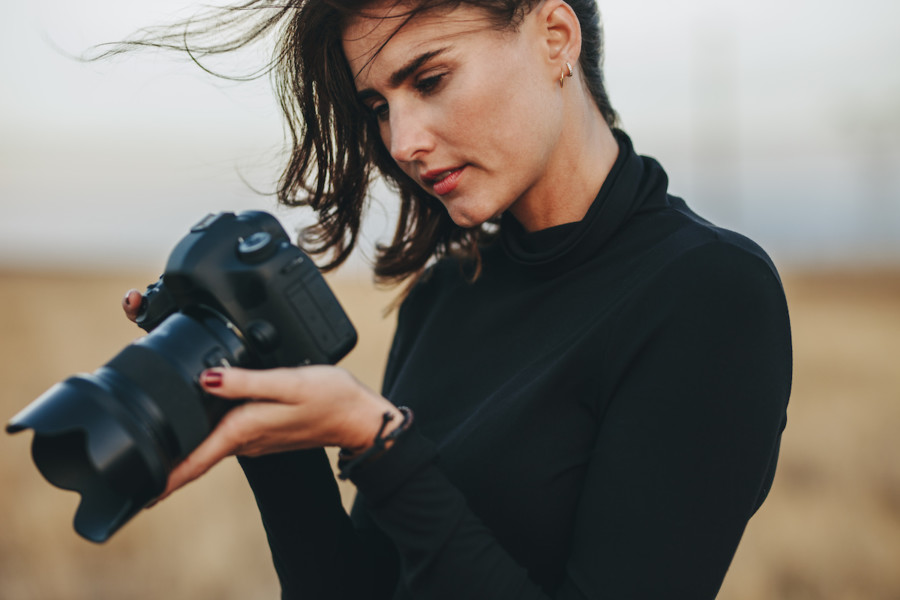Share
Instagramming the Glory of Baseball: Brad Mangin’s Book, Instant Baseball
Brad Mangin is one of those sports photographers who almost needs no introduction. Since becoming a full-time freelance photographer 20 years ago, ...

Brad Mangin is one of those sports photographers who almost needs no introduction. Since becoming a full-time freelance photographer 20 years ago, Brad has amassed over 64,000 publicly available images in his archive – many of which feature his beloved San Francisco Giants.
As a regular shooter for Sports Illustrated and Major League Baseball, Brad has long ago mastered the professional action shot with his Canon DSLRs. But last year, when Brad got his first iPhone (or as he says, “joined the rest of the civilized world”), something incredible happened – it was as if Brad was seeing the world of baseball in a completely different light.
The freedom of walking around with no gear and just a cellphone let Brad see the game – and everything that goes with it – with fresh eyes. Brad was quickly hooked on cellphoneography and posting images to his Instagram feed. The results are stunning and give us all a seemingly secret, never-before-seen side to baseball.
In his new book, Instant Baseball, Brad shares 200+ of his favorite Instagrams from the 2012 MLB season – from Spring Training in February all the way through the World Series in October. The unique thing about Brad’s book is its wide appeal. Brad worked to capture every detail of the game, from the dugout, to the fans, to the hot dog stand and bubblegum. But it’s his player portraits that are the real stunner. Brad has a way of capturing emotion in its purest, most fun and poignant form – that’s what makes this book a real joy to own.
We sat down with Brand to discuss Instant Baseball and learn more about how it all came together:
PhotoShelter: What inspired you to first start shooting with your iPhone?
Brad Mangin: I was inspired to start shooting pictures as soon as I got my first iPhone 4S in December of 2011. I had heard great things about the camera. I had also heard great things about the free Instagram app. I have always enjoyed sharing words and images over social networks with friends, so I thought the Instagram app would be perfect for me. Some of my friends were using their phone to do some cool stuff, but it was during the winter so I had nothing to shoot but my cats Mike and Willie. I thought it would be fun to start shooting something I know- baseball- as soon as I went down to cover spring training in Arizona with my real cameras in February of 2012 for Sports Illustrated.
PS: Do you ever miss your DSLR?
BM: I still shoot most everything with my Canon DSLR cameras. I pretty much just shoot baseball, and my clients require that I shoot action pictures with long lenses, etc. I obviously can’t shoot action with my iPhone, so once the game starts the only thing I might shoot with my iPhone is a stadium shot from wherever I might be shooting from.
The iPhone stuff just started as something fun to do before games while I was waiting around before the first pitch. I normally get to the park several hours early so there is always time to goof around and look for something fun to shoot.
PS: What’s a typical day of shooting look like?
BM: I usually get to a game 2.5 to 3 hours early for batting practice, etc. On a good day I will shoot a bunch of pre-game with my DSLR and my iPhone. I am happy when I can do a good job of covering the game for my clients as well as getting 3-4 good Instagrams out to my feed.
PS: Did you always have a book in mind? At what point did you start working on it?
BM: I did not have a book in mind until my baseball picture editor Nate Gordon at Sports Illustrated got the magazine to publish 18 of my baseball Instagrams across all 6 pages of “Leading Off” (three consecutive doubletruck spreads) in July last year. Once I held the issue in my hands the Friday of that week and heard positive feedback from many people, I immediately knew this would make for a great book. I called my literary agent, Amy Rennert, that night and got right on the job of trying to find a publisher.
Until this time, my only goal was to get the work published in Sports Illustrated. Now that I had achieved that, I was inspired to continue shooting Instagrams for the rest of the baseball season and on into the postseason. Having many more months to shoot baseball with my iPhone allowed me to round out my coverage of different teams and get broader appeal, and to also come up with a few different images I didn’t have yet.
PS: Do you have any favorite filters?
I generally use one of three filters: Lo Fi, Earlybird, and Hefe.
PS: Why did you choose to work with boutique publishing house Cameron + Company?
BM: I chose Cameron + Company because my agent, Amy Rennert, recommended them and set up a meeting between their publisher, Chris Gruener, and myself in early September. Chris and I immediately hit it off. He is a huge baseball guy like myself and had some great ideas. The icing on the cake was the fact that I would get to work with Chris’s business partner and amazing designer, Iain Morris, on the book. Iain is an insanely talented British fellow who knows nothing about baseball – and that is why I loved working with him so much. He did not care who any of the players were. He looked for color and shapes and sizes to compose his vision of how the book should look. Once I saw some early PDF files of the design of the book, I knew he had nailed it. The bonus was I still had 6 weeks of baseball to shoot and he would make requests for certain pictures that he needed, or certain colors to help the design. This was a huge luxury!
PS: How many images did you have to choose from?
BM: I had several hundred Instagrams to look at by the time I photographed the San Francisco Giants World Series parade in downtown San Francisco on Halloween day, and we used almost every frame! The publisher loved everything so much they just kept increasing the size of the book. We went from 124 pages to 148 pages up to the final count of 176 pages to fit everything in.
PS: Any secrets to getting the best shot?
BM: I just kept working harder and harder to come up with new subjects and new angles. If the pictures were boring to me I knew no one else would like them. I hit a wall in September when I took a break to come to New York to attend Luminance, a conference put on by PhotoShelter. I went to an amazing talk put on by Zack Arias – whom I had never met – and he completely changed my attitude. I had been out to a Mets game the night before with my phone in search of Mets pitcher R.A Dickey who was having an great season with his knuckleball. I knew I needed to have his grip in my book, but I was not able to corral him that night as he ducked into the clubhouse after shagging balls during batting practice . I left the park that night a defeated man, but the next day Zack fired me up to do everything I could to finish a project – any project – and I knew this meant I needed to go back out to Citi Field, even if it meant missing some of the speakers at the seminar, to get Dickey’s grip.
Because of Zack, I went back the next day and had my friend, Mets team photographer Marc Levine, grab Dickey and bring him out of the clubhouse before the game. “You got your phone ready?” he asked. I tried hard not to laugh and shot three frames and got what I needed, and it is one of my favorite images in the book.
PS: What’s your stance on Instagram today as a publishing platform for photographers?
BM: I think Instagram is a great tool to get your work out there and have fun with photography. Because of my book I shot a few games on assignment with my iPhone for The New Yorker and I am also trying to work on a few other projects for other clients who like what I am doing with the social media stuff.
PS: Any advice to photographers looking to create a beautiful book like yours?
BM: One thing I found out early on is that you really need a hook. My book became possible because of a gimmick – I shot with my iPhone. Everyone has a smart phone that they shoot pictures with, but I was a professional photographer using the same phone as fans to give them an up close and personal look at the game they love.
My book has two different crossover markets that makes a publisher want to publish it: it appeals to the tech crowd and to the baseball fans. I have already done many talk radio show interviews arranged by our publicist promoting Instant Baseball, and over half of the shows were general interest, not sports talk. The fun thing is I can talk about the book on both fronts and appeals to both audiences.
You need to be insanely passionate and be able to sell your book. You also need to be realistic. Sure, I would love to do an amazing gigantic coffee table book full of my best baseball pictures shot with my DSLR cameras, but no one would buy it. The book would look great and I would be thrilled with it, but there would be no hook for consumers. In today’s economic climate a huge dig-me book by me is not very appealing to publishers or consumers. It is sad and hard to accept, but I am a realist.
Get your copy of Instant Baseball on Amazon or the iBookstore. Brad will be speaking at the Apple Store in Soho, New York on Thursday, May 30 at 7pm. Also check out Brad’s photos in Brian Murphy’s new book, Never. Say. Die.









